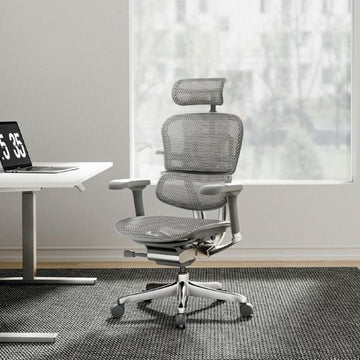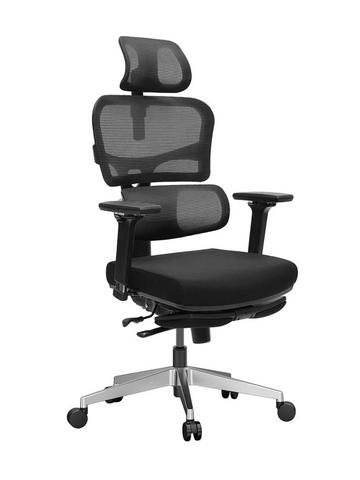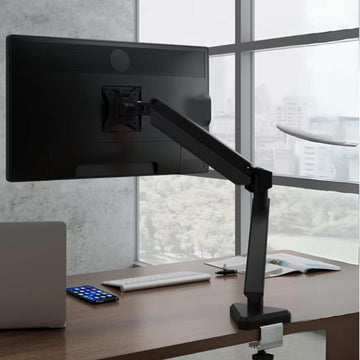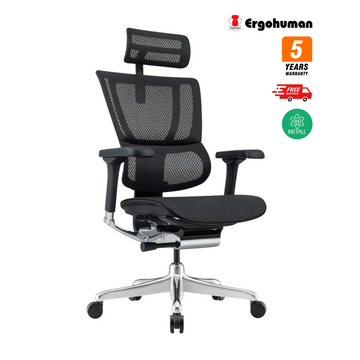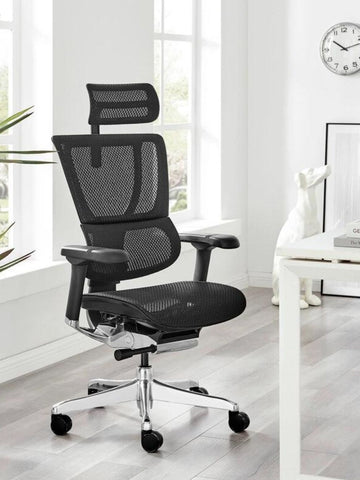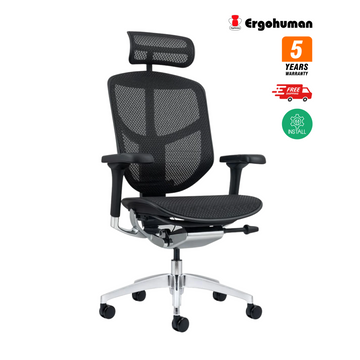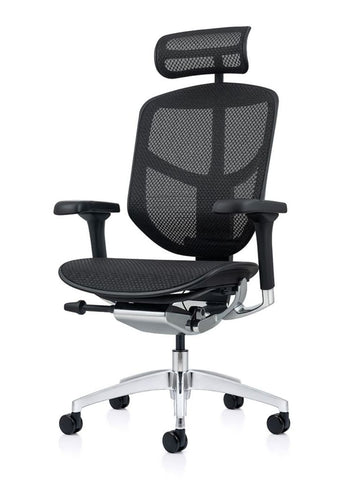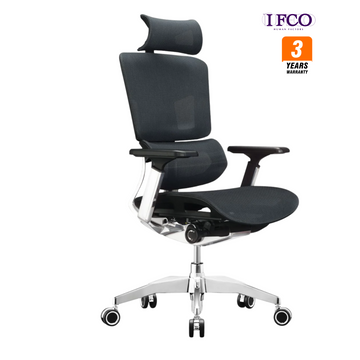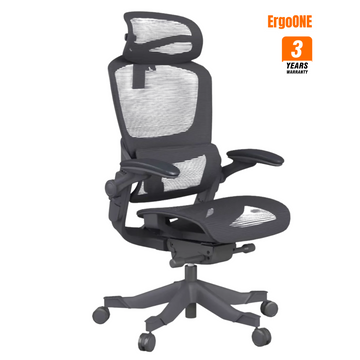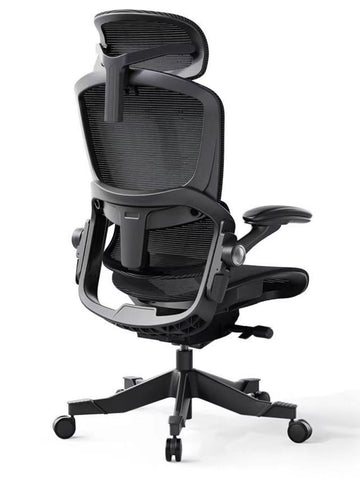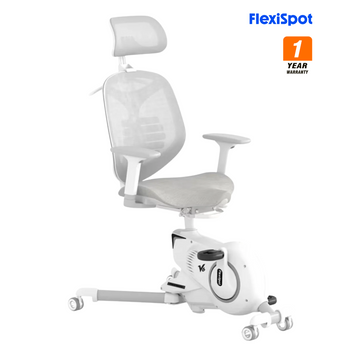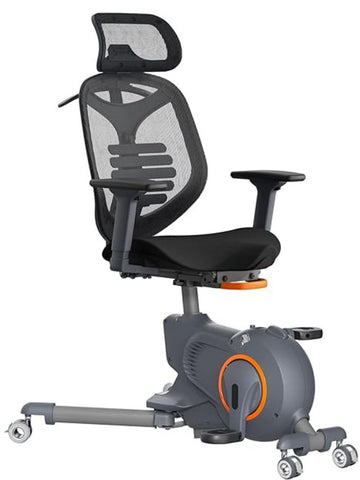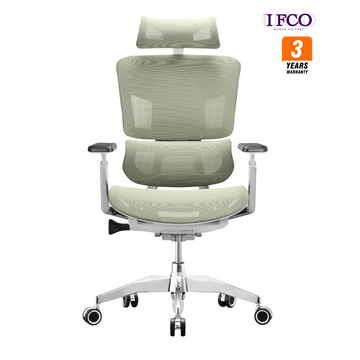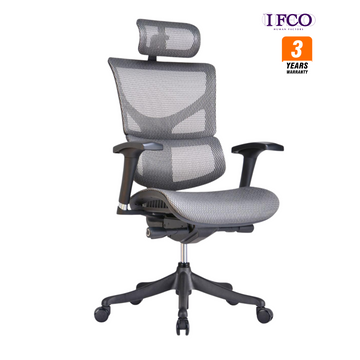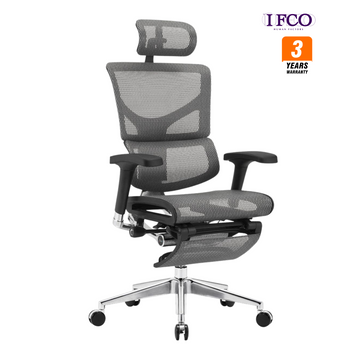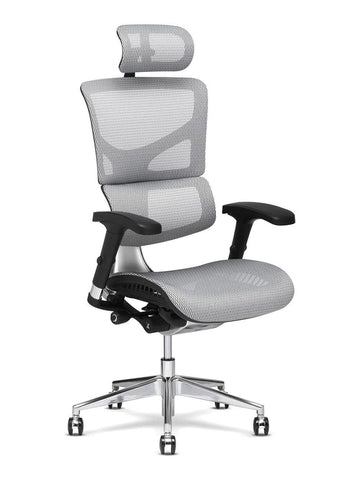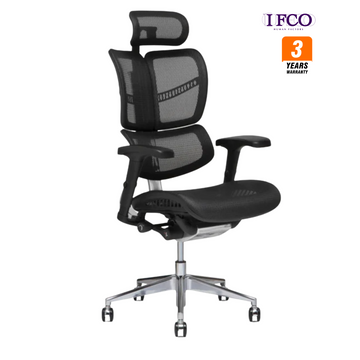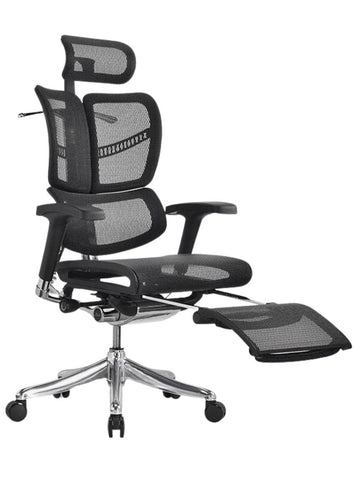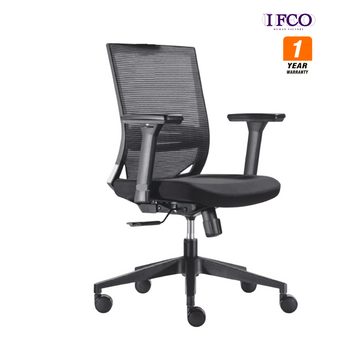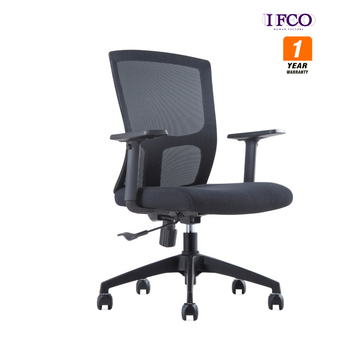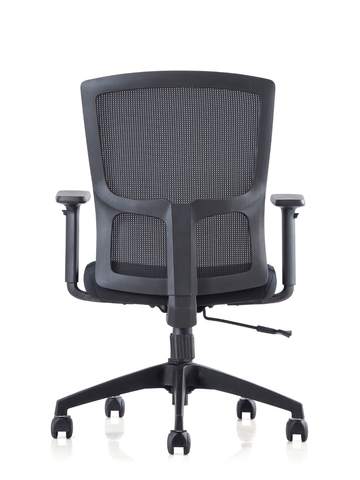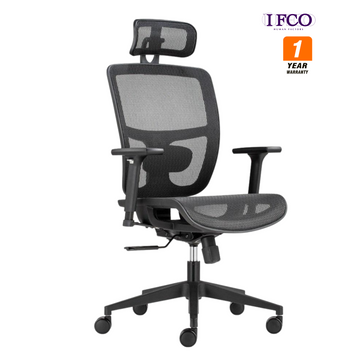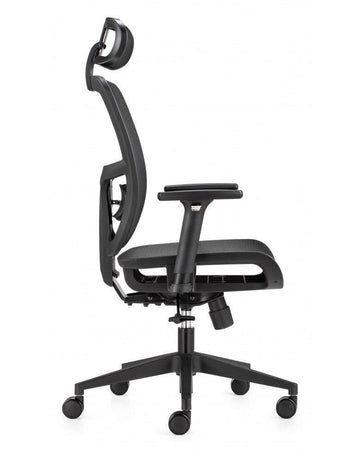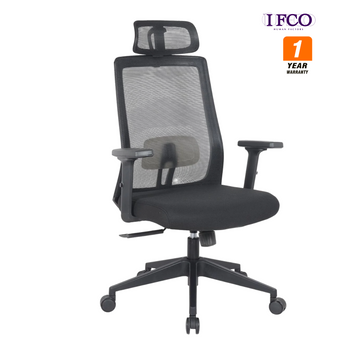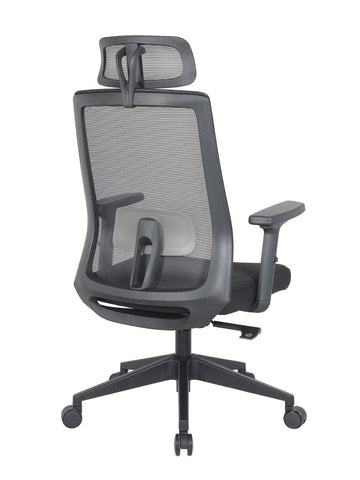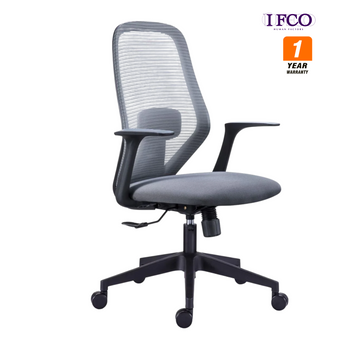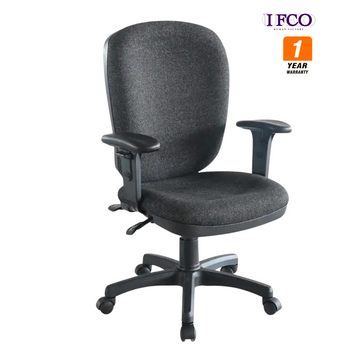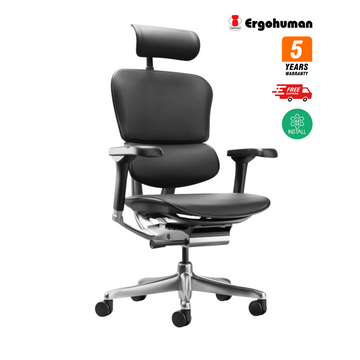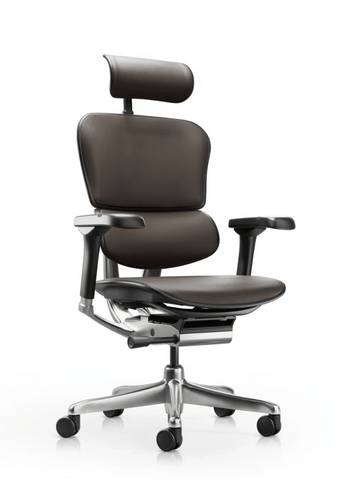Ergonomic Chairs
IFCO, as an expert in ergonomic chairs, has been rooted in Hong Kong for over 16 years. With our experience and knowledge in ergonomics, and endorsements from chiropractors, IFCO diligently search for the finest, comfortable, and affordable ergonomic chairs, office chairs, and computer chair products, to meeting the demands of Hong Kong office workers who value a healthy work environment and proper sitting posture.
IFCO ergonomic office chair products provide you with the utmost comfort, support, and protection, safeguarding your back spine, correcting your posture, and ensuring a healthy workspace. Welcome to visit the IFCO showrooms in Kwun Tong, Sha Tin, or Wong Chuk Hang.
- Featured
- Best selling
- Alphabetically, A-Z
- Alphabetically, Z-A
- Price, low to high
- Price, high to low
- Date, old to new
- Date, new to old
Shopping Guide
[Office Chair: 5 Key Factors] How to Choose an Ergonomic Office Chair that Fits You?

Ergonomic chairs are typically designed to conform to the structure and posture of the human body, providing good support and comfort. They can alleviate discomfort and pressure caused by prolonged sitting, allowing you to maintain a comfortable sitting posture for extended periods of time.
-
Prevents Posture Issues:
Prolonged sitting can lead to posture issues such as back pain, stiff neck, and lumbar discomfort. Ergonomic chairs often have adjustable features that support correct sitting posture, reducing the burden on the body and helping to prevent posture-related problems.
-
Enhances Work Efficiency:
A comfortable working environment is crucial for improving work efficiency. Ergonomic chairs provide comfortable support, reducing bodily discomfort and allowing you to focus on your work without distractions or discomfort caused by poor sitting posture.
-
Reduces the Risk of Work-Related Injuries:
Incorrect sitting posture and unsuitable chairs can increase the risk of work-related injuries. The design of ergonomic chairs can reduce pressure on joints, muscles, and the spine, lowering the chances of chronic pain and injuries.
-
Adjustability and Personalization:
Ergonomic chairs often offer various adjustable features that can be customized based on individual height, body type, and preferences. This allows each person to find the most suitable sitting posture and support, providing a personalized user experience.
4 Key Considerations for Choosing an Ergonomic Office Chair

Posture Correction
The importance of spine and neck support is crucial when selecting a chair. A good computer chair should provide proper spinal support to maintain correct posture. The back should be snug against the backrest, and the shape and flexibility of the backrest should align with the individual's spinal curve. Similarly, the neck should receive adequate support to alleviate neck strain and discomfort caused by prolonged work.

Adjustability
The adjustability of seat height, seat angle, armrest height, etc., is essential. A good computer chair should offer multiple adjustments to accommodate different individuals' needs. The seat height should be adjustable to allow feet to rest flat on the floor and form an approximate 90-degree angle between the knees and hips. The seat angle should also be adjustable to ensure comfort and support in sitting posture. Additionally, the height and angle of the armrests should be adjustable to accommodate different individuals' arm and shoulder positions.

Material and Comfort
Choosing appropriate materials and padding for comfort is important. The chair material should be breathable, durable, and easy to clean. The padding of the seat and backrest should provide sufficient support and softness to alleviate pressure points and provide comfort during long periods of sitting.
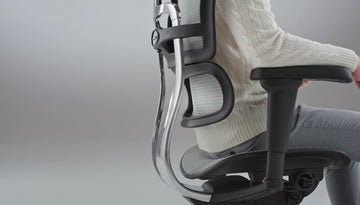
Fits Body Size
Considering individual height, body shape, and weight ensures the right chair size. Everyone has different body sizes and shapes, so choosing the right chair size is crucial. The chair's height, width, and depth should be able to accommodate the individual's height and body shape, ensuring stability and comfort in sitting posture. Additionally, the chair's maximum load capacity should support the individual's weight to ensure safety and durability
5 Key Elements for Choosing an Ergonomic Office Chair
-
Seat Height:
A computer chair should have adjustable height to accommodate users of different heights. Choosing a chair with a wide height adjustment range ensures that the feet can rest flat on the floor and maintain an angle of approximately 90 degrees between the knees and hips. -
Adjustable Lumbar Support:
Select a chair with adjustable lumbar support to ensure proper support for your lower back. This helps maintain correct posture and reduces lower back strain. -
Upper Back Support:
Backrest support is a critical element. It should have adjustable height and angle to ensure proper alignment and support for the back. The height of the backrest should be able to support the entire back, from the lower back to the shoulders. There should be sufficient adjustability in the backrest angle to accommodate different individual preferences. -
Seat Cushion:
The choice of seat cushion is also important, as it should provide comfort and support. The seat cushion should have appropriate elasticity and padding to alleviate pressure on the sitting bones and fit the individual's body shape. We particularly recommend choosing a mesh seat cushion. Mesh seat cushions are commonly used and offer excellent breathability and comfort. The mesh structure promotes air circulation, keeping the seat surface cool and dry, reducing sweat accumulation. Mesh seat cushions provide elasticity and softness, adapting to body curves and providing even support. Durable synthetic fiber materials ensure long-term use without deformation or wear. Additionally, mesh seat cushions are easy to clean and resistant to dust and dirt. Choosing a chair with a mesh seat cushion can enhance comfort and user experience. -
Armrests:
The armrests should provide comfortable support and be adjustable in height and angle as needed. Ideally, the armrests should allow relaxation of the arms and shoulders without obstructing the user from getting close to the desk.
Before you buy
-
Try our demo:
Try sitting in the chair before making a purchase to assess its comfort and adjustability. Trying it out in person is a crucial step to ensure the chair's comfort and suitability. Sit in the chair and feel the cushioning, backrest, and support, checking if they meet your personal preferences and needs. Everyone has different body sizes and preferences, so trying out the chair can help you determine if it suits your requirements. -
Seek Professional Advice:
If you're feeling unsure about choosing the right chair, seeking advice from professionals is a wise choice. You can consult IFCO's sales representatives, describe your needs and preferences, and receive our professional guidance. We can provide chair recommendations that suit you based on factors such as your body size, usage habits, and budget.
Summary
Since everyone's body characteristics and needs are different, there is no one universal best choice. We should choose an ergonomic computer chair that can best meet our needs based on our height, body size, and usage habits. It's essential to try sitting and evaluate the adjustability, comfort, and support of different chairs. Most importantly, we should select a chair that ensures proper posture and provides comfortable support during long hours of computer use.
Choosing the right ergonomic computer chair is an important step in maintaining our physical health and improving work efficiency. By paying attention to key factors and making wise choices based on individual needs, we can ensure that we select a computer chair that adheres to ergonomic principles, providing good support and comfort while reducing potential health issues associated with long-term computer use.
購買前的建議
-
親自試坐:
如果可能的話,在購買前試坐椅子並評估其舒適度和調節功能。親自試坐是非常重要的步驟。這樣可以確保椅子的舒適性和適合度。坐在椅子上,感受座墊、背墊和支撐的感覺,檢查是否符合個人的偏好和需求。每個人的體型和偏好不同,所以試坐椅子可以幫助您確定是否適合您的需求。 -
尋求專業建議:
如果對選擇合適的椅子感到困惑,尋求專業人士的建議是一個明智的選擇。您可以諮詢IFCO的銷售人員,描述您的需求和偏好,並獲得我們的專業指導。我們可以根據您的體型、使用習慣和預算等因素,提供適合您的椅子建議。
總結
每個人的身體特徵和需求都不同,所以沒有一個通用的最佳選擇。我們應該根據自己的身高、體型和使用習慣來選擇一張能夠最大程度滿足我們需求的人體工學電腦椅。進行試坐並評估不同座椅的調整功能、舒適度以及支撐性是非常重要的。最重要的是,我們應該選擇一張能夠確保我們在長時間使用電腦時保持良好姿勢並提供舒適支撐的椅子。
選擇適合的人體工學電腦椅是我們維護身體健康和提高工作效率的重要一步。通過關注關鍵因素並根據個人需求做出明智的選擇,我們可以確保選擇到一張符合人體工學原則的電腦椅,從而提供良好的支撐和舒適性,並減少長期使用電腦帶來的潛在健康問題。








